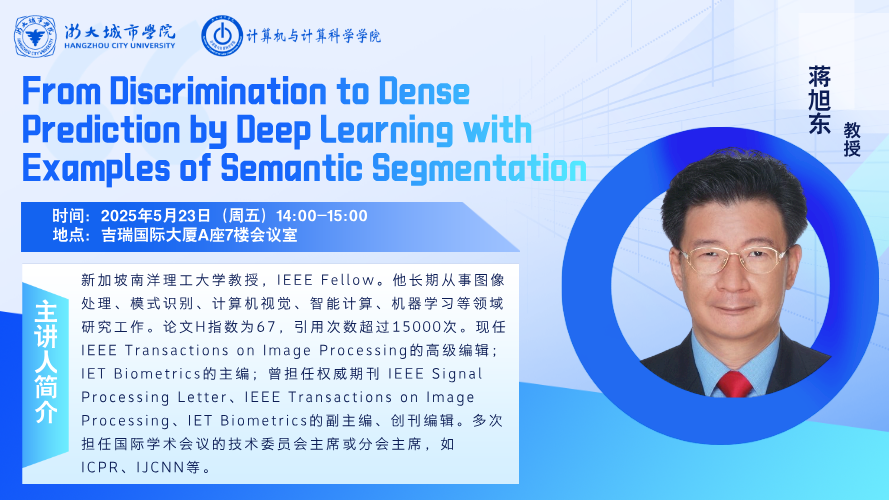| From Discrimination to Dense Prediction by Deep Learning with Examples of Semantic Segmentation |
|
发布时间:
2025-05-12
15:08
浏览次数:
|
|
时间:2025-05-23 14:00 地点:吉瑞国际7楼会议室 报名截止时间:2025-05-23 12:00 个人简历 新加坡南洋理工大学教授,IEEE Fellow。他长期从事图像处理、模式识别、计算机视觉、智能计算、机器学习等领域研究工作。论文H指数为67,引用次数超过15000次。现任 IEEE Transactions on Image Processing的高级编辑;IET Biometrics的主编;曾担任权威期刊 IEEE Signal Processing Letter、IEEE Transactions on Image Processing、IET Biometrics的副主编、创刊编辑。多次担任国际学术会议的技术委员会主席或分会主席,如ICPR、IJCNN等。 单位:新加坡南洋理工大学 报告主要内容 With the increasing powerfulness of deep learning, artificial intelligence moves from simple discriminating task to challenging dense prediction. Visual scene segmentation is an example of dense prediction problem as it need to classify every pixel in the image into different classes. It is crucial to exploit context information and aggregate multi-scale features to achieve dense prediction. Context is essential for dense prediction. Due to the diverse shapes of objects and their complex layout in various scene images, the spatial scales, locations and shapes of contexts for different objects have very large variation and are unknown. There is no way to do any kind of alignment or normalization over different inputs. It is thus ineffective or even impossible to aggregate various context information from a predefined fixed region or simply learnt from training data. This talk will show how to solve these problems by elaborating a number of ideas from two CVPR oral papers and a T-PAMI paper. |
